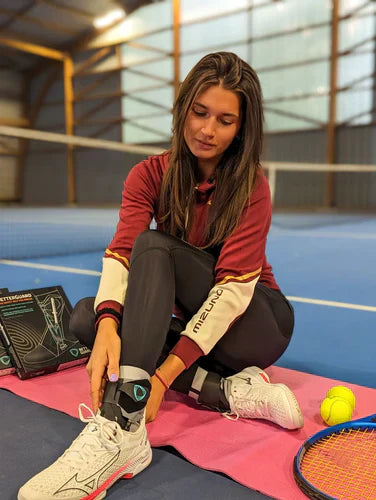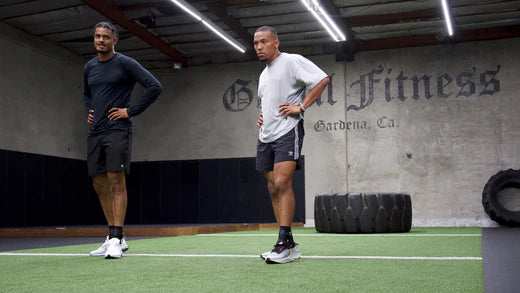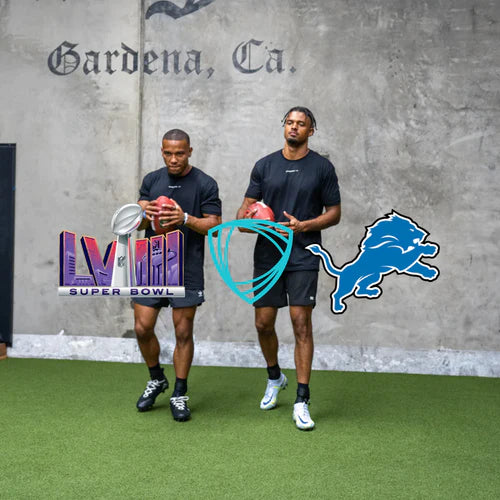Constantly twisting your ankle, but what to do about it? Ankle instability is unfortunately a common reality in recreational and professional sports. Around 10 to 20 out of 100 people suffer from an unstable ankle after a sprain. But why does the foot simply buckle and which symptoms of instability in the ankle should be paid attention to?
Why is chronic ankle instability so common?
Chronic ankle instability occurs when the ankle continues to give way on its own six months after the actual sprain. Frequent twisting of the foot impairs support and can lead to a permanently unstable ankle joint. The reasons for this are complex, but can usually be broken down into two main factors:
- overstretched ligaments that are severely dilated
- torn ligaments that have grown together loosely after the ligament tear
Reasons for an unstable ankle in recreational and professional sports
People who have frequently twisted their ankles while exercising are particularly at risk of suffering from a chronically unstable ankle . This can significantly affect the enjoyment of leisure activities as well as one's career in professional sports.
The persistent insecurity and ligament weakness in the foot occur particularly after inadequate healing, sprains or more serious injuries. It is therefore crucial to understand the cause of the frequent twisting of the ankle in order to find effective solutions for the future and, in the best case, to avoid surgery.

The most common symptoms of ankle instability
Instability in the ankle joint shows symptoms that can occur suddenly and unpredictably. This can not only affect everyday life, but also make sporting activities almost impossible. The first signs are not always clear to those affected, as they can express themselves in different ways.
However, if any of the following symptoms occur more frequently, it could indicate an unstable ankle:
- Swelling and pain just above the ankle
- uncontrolled and frequent twisting
- the foot simply bends away without putting any strain on the joint
- Restrictions in movement and a persistent feeling of being blocked
- Uncertainty and instability when walking on rocky or uneven terrain

Effective aids and healing approaches for unstable ankles
To actively manage chronic ankle instability, it is crucial to stabilize the ankle joint. Frequent twisting of the ankle can also be treated using physiotherapeutic approaches, which are popular in both the preventative and post-preventive areas.
Stabilize an unstable ankle – positive experience with an ankle bandage
If the ankle joint is unstable, it is best supported with an ankle bandage. This rests on the joint and is intended to prevent frequent twisting of the ankle during everyday life.
More stability and increased safety: Increased stability allows you to move with less fear in your head and thus full performance.
The walking and running style becomes “more stable”: Your walking style can be optimized with an ankle support and lead to better efficiency and performance.
Unstable ankle – physiotherapy as the key to improvement
Physiotherapy plays a crucial role in rehabilitating and strengthening the weakened muscles and ligaments in the ankle. Professional guidance and targeted exercises are of utmost importance. The following exercises can help stabilize the ankle joint:
- Alternate standing on your heels and tiptoes to train the joint.
- Repeatedly grasping an object with your toes to make contact with the ground.
- Balancing on a wide rope to control balance.
Check out our post on 4 effective ankle exercises for stabilization!

The BetterGuard – Innovation helps with unstable ankles
However, classic stabilizing orthoses and rigid bandages have limitations in everyday life and sports. They are often uncomfortable, especially when combined with shoes, or permanently restrict freedom of movement. However, the innovative ankle support from Betterguards does not have these unwanted side effects. The BetterGuard opens up new possibilities for dealing with your unstable ankle. You can do sports without any worries and, if you want, achieve top performance without sacrificing comfort or being limited in your movements.
The BetterGuard actively prevents injuries
But how does that work? The BetterGuard effectively prevents the ankle from twisting again. As soon as a critical turning or rolling movement is imminent, the intelligent ankle protection is activated and prevents the ankle from twisting.
Protected from frequent twisting – best companion after previous injuries
The BetterGuard is the perfect companion for athletes who have previously suffered injuries. The ankle bandage offers the necessary protection and a high degree of freedom of movement to be in top shape again on the field or in training.
The decisive factor here is the innovative technology with the patented BG POWER mini piston, which guarantees you maximum performance and always normal freedom of movement.
Conclusion: Treat unstable ankles preventively
Chronic ankle instability is an underappreciated challenge that can be caused by ligament strains or tears.
With the right preventive approaches such as physiotherapeutic services and the innovative ankle support The BetterGuard , you as a sports enthusiast can regain your freedom of movement and actively practice your favorite sport.
Frequently asked questions about unstable ankles
Which shoes for an unstable ankle?
An unstable ankle is best protected by well-fitting sports shoes or orthopedic shoes. The BetterGuard ankle support also provides support during sports in training or games. With the bandage it is no longer necessary to wear higher-cut shoes.
What can you do to prevent frequent twisting of your ankle?
Frequent twisting is best treated with regular physical therapy exercises and a custom-fit ankle bandage.
Are there professional athletes who use The BetterGuard?
Yes, we have ambassadors in various sports who use The BetterGuard to prevent unstable ankles. Some of them are the tennis players Bojana Marinkovic & Anastasiya Kuparev, the German brothers Moritz and Franz Wagner from the NBA and the St. Brown brothers in American football.





